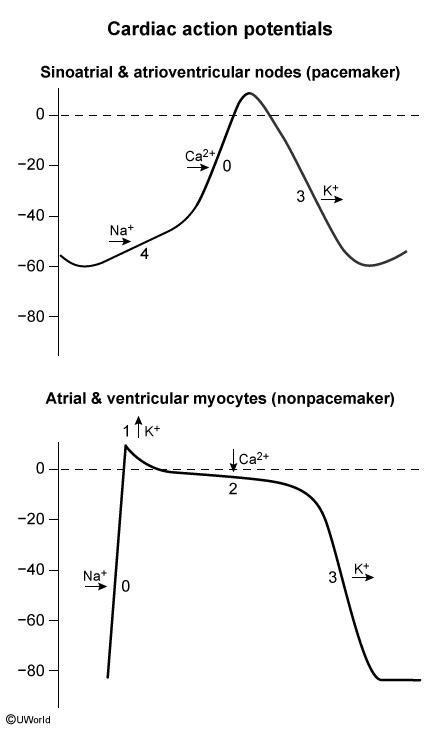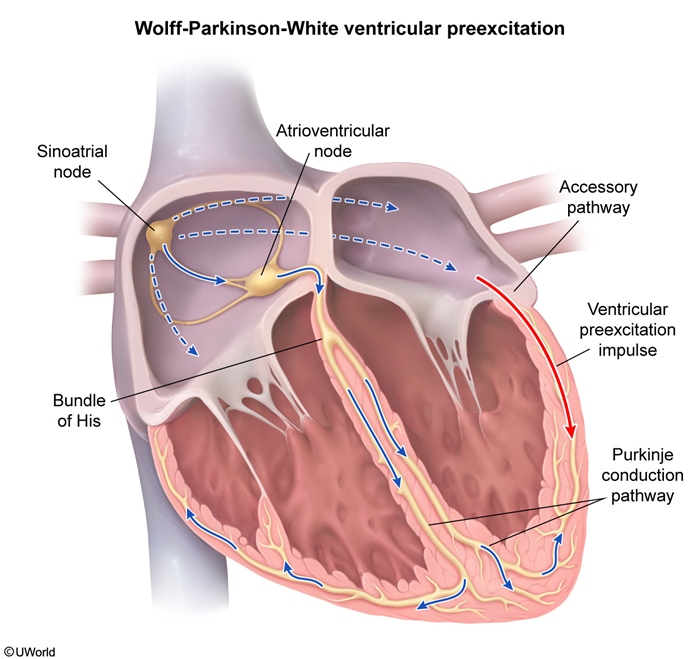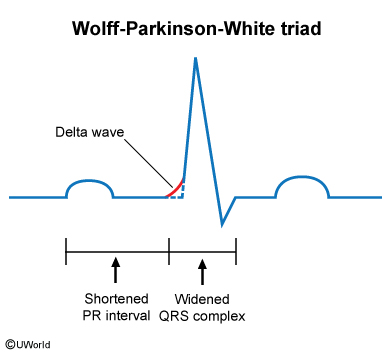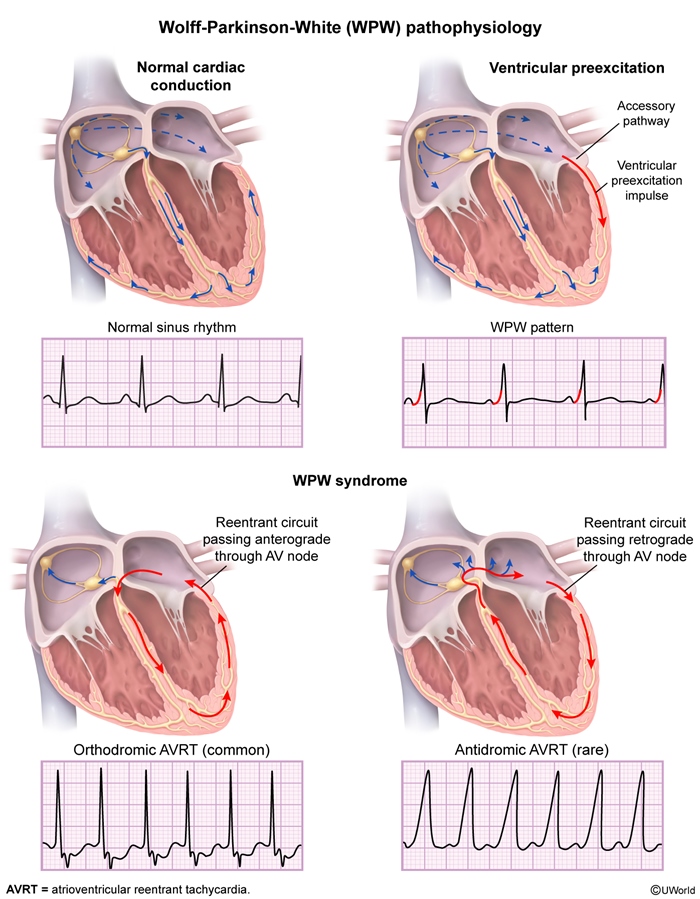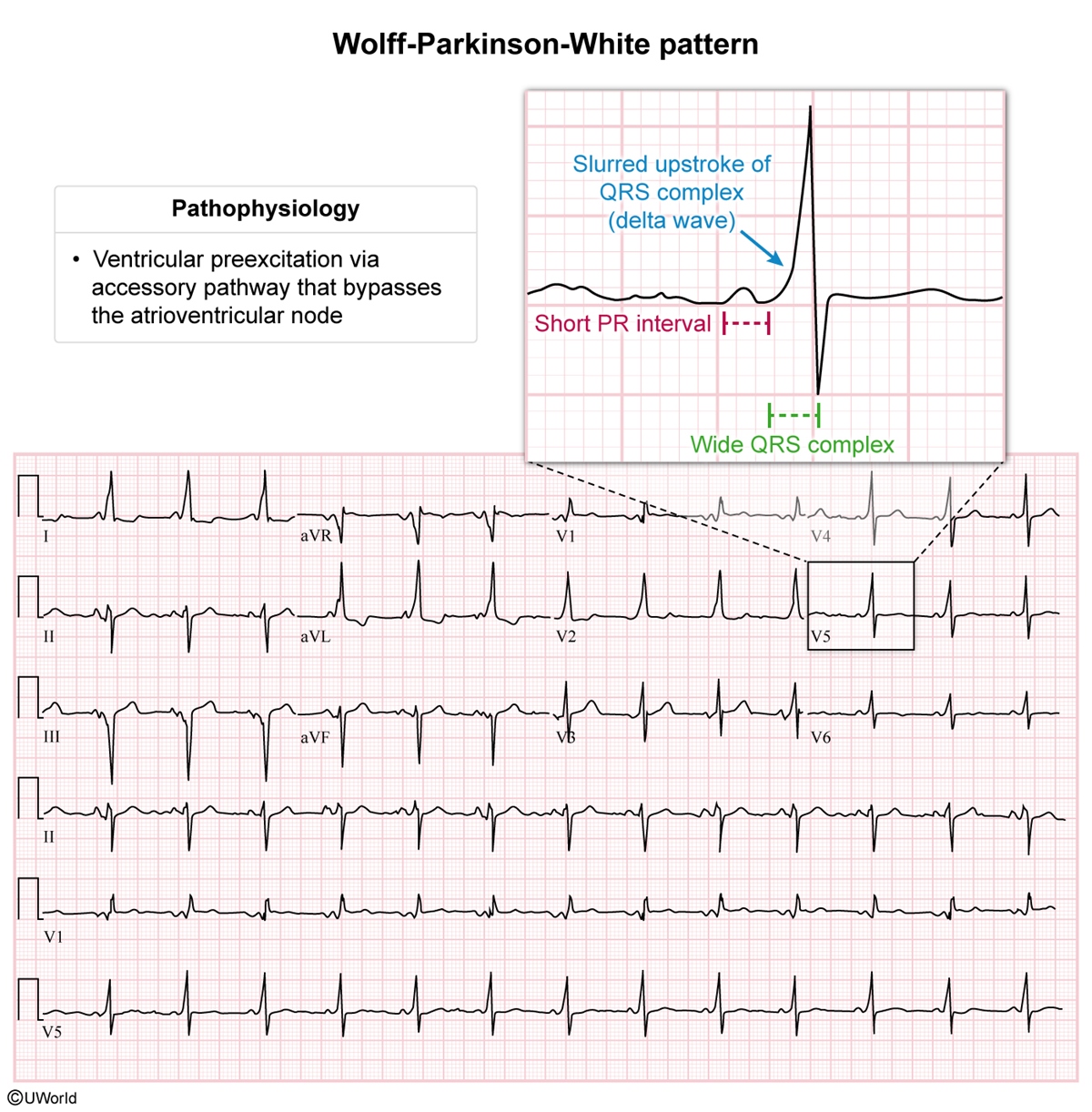Wolff-Parkinson-White (WPW) Syndrome
Article Sections
Introduction
Wolff-Parkinson-White (WPW) pathophysiology involves an abnormal accessory pathway that directly connects the atria to the ventricles, allowing conduction to bypass the atrioventricular (AV) node. Because conduction through the accessory pathway is typically faster than conduction through the AV node, a portion of the ventricles depolarize earlier than usual in the conduction cycle (ventricular preexcitation). The ventricular preexcitation commonly creates characteristic findings on ECG, known as WPW pattern. Many patients with an accessory pathway and WPW pattern on ECG remain asymptomatic, but some develop symptomatic paroxysmal supraventricular tachycardia (PSVT); those who develop PSVT have WPW syndrome. Ventricular preexcitation is important to recognize because it can increase the risk for sudden cardiac death (SCD).
Pathophysiology
An accessory pathway (sometimes called a bundle of Kent or a
Continue Learning with UWorld
Get the full Wolff-Parkinson-White (WPW) Syndrome article plus rich visuals, real-world cases, and in-depth insights from medical experts, all available through the UWorld Medical Library.
Figures
